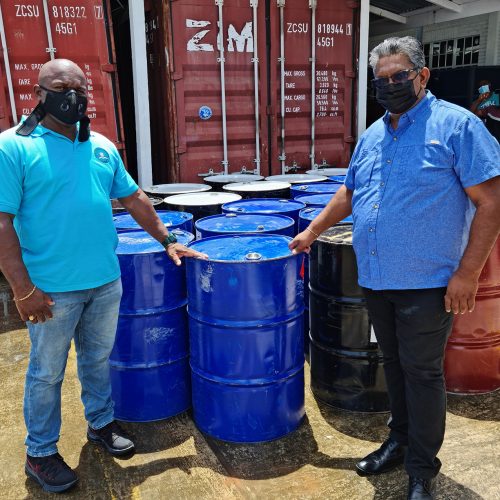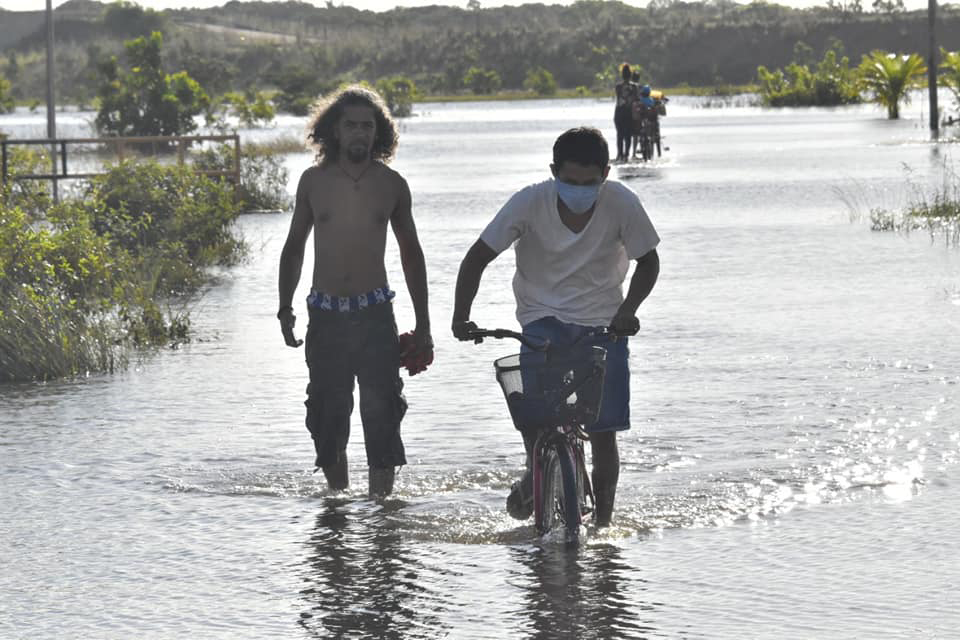With the majority of farms in the Deep South Rupununi inundated due to the early seasonal rain, food security over the next three months is under threat, Michael Thomas, Vice Chairman of the South Rupununi District Council says.
Speaking with Stabroek News yesterday, he explained that most of the farms have been waterlogged since the start of the wet season which began a few weeks ago. On this note, he stated that the majority of the cassava crops are beginning to rot.

“At this point there isn’t much that we can do because the cassava roots are not mature. The farmers are trying to harvest but in some areas the water is high already. We never estimated that the flooding will come this high so early in the season,” he lamented.
Thomas said that farmers are also requesting drums and pans to being processing of harvested cassava for farine production.
The Civil Defence Com-mission (CDC) yesterday received 100 empty drums from GAICO Inc in response to a call from residents of Aishalton.
Thomas had said that the barrels are needed for storage. The drums will be taken into Region 9 soon where they will be distributed, the CDC said.
Concerns over food security were also raised with the CDC which visited several affected communities over the weekend and carried out an assessment on the impact of the flooding.
Thomas noted that while the flooding has been receding, whenever there is intense rainfall the water level rises quickly.
“The earth has a lot of water already so if it stops raining for a three days and then starts again for a while, we get flood. This is the first time in a decade the water levels have been so high and causing so much damage,” he stated.
He said too that at least four homes have been destroyed as a result of the flooding. Two of the four homes are in his village, Aishalton while the others are in Karaudarnau.

Additionally, he said the village councils will have to start considering shelters to house families if the situation worsens during the next two months.
During the CDC’s visit to the inundated villages of Shea, Awarewaunau, Maruranau and Aishalton in the Deep South Rupununi, Shea’s Toshao, Jason Kaikan said that over 60 homes have been affected by the floods. A building, used as a garage for the village tractor, collapsed killing six sheep as a result of the rising waters. In some areas of Shea the water rose to four feet.
In Aishalton, a house made partially from burnt bricks collapsed, after it became saturated. Aishalton Toshao Thomas related to the CDC that over 20 farms have been affected.
In a statement, Director General of the CDC, Lieutenant Colonel Kester Craig, said that he is working with the Private Sector to source essential items for the affected areas. He also committed to closely monitoring the impacted areas in Region 9 and to work with local authorities to ensure that residents are safe.
Prime Minister Mark Phillips led a delegation of senior Government officials to the region on Saturday and flew over several communities to assess the damage himself. He also visited Gunns Strip and Sand Creek, where he distributed relief supplies and interacted with the residents.
In a post on his Facebook page, he added that while the CDC has shipped over 2000 hampers to the region, the organisation will also monitor the situation on the ground throughout the coming weeks. At the moment the water has begun to recede from the flooded areas, but more rain is expected.
The delegation included Minister within the Ministry of Public Works, Deodat Indar, Minister of Amerindian Affairs, Pauline Sukhai, Member of Parliament and Advisor to the Minister of Health, Dr Bheri Ramsaran and Director General of the Ministry of Agriculture, Madanlall Ramraj.





